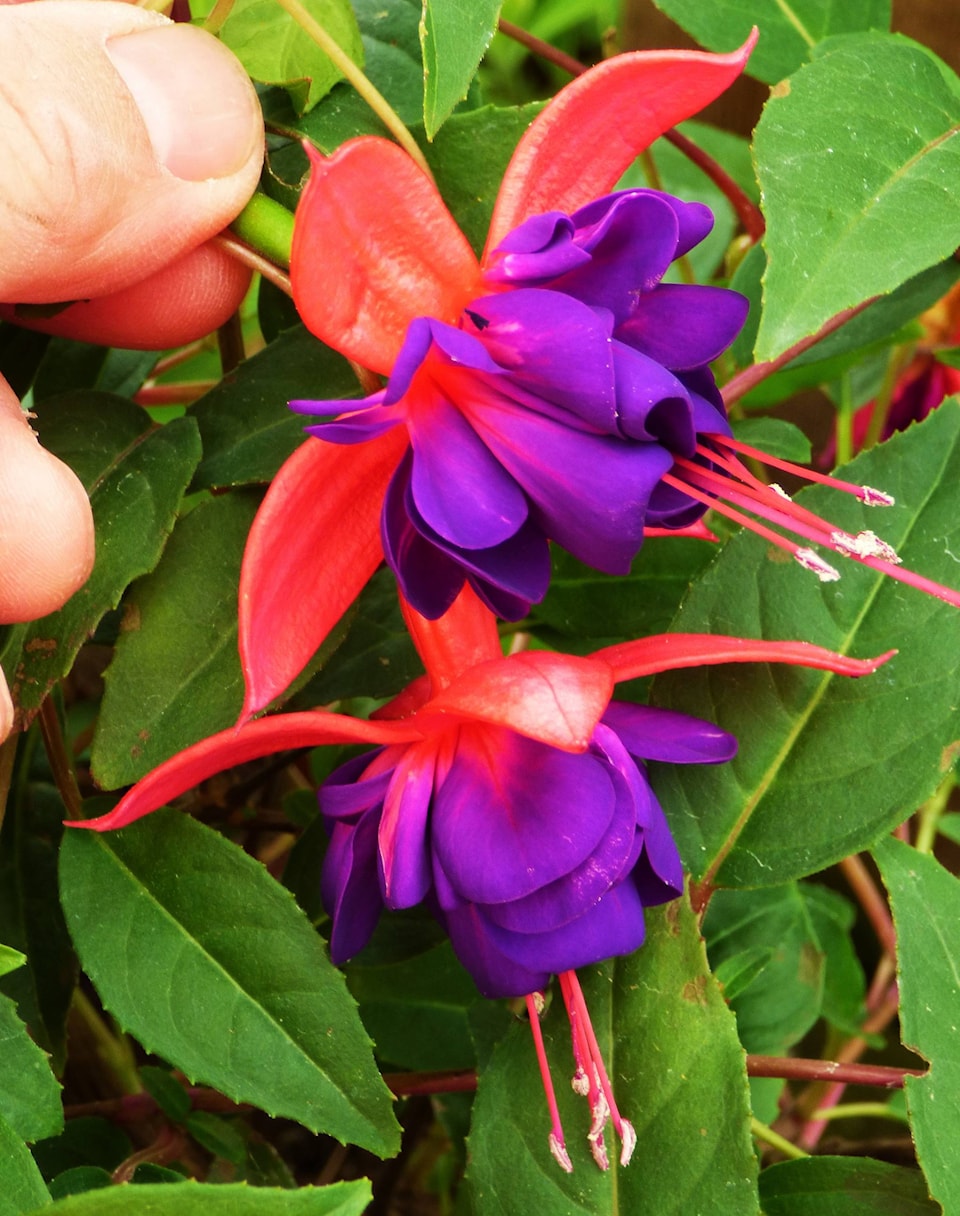Hardy fuchsia and I first became acquainted over 35 years ago during my initial foray into horticulture on a 40-acre estate in Whonnock.
Head gardener Wim Hunfeld was teaching me how to prune a mass planting of them in spring, carefully removing the dead wood down to the emerging shoots at the base of the plant.
To be honest, I had no expectations that these sparse twigs would amount to much, but by early summer they had filled in completely and started budding.
Once the bright red and purple blooms had fully emerged, the hummingbirds took over, allowing no one within 20 feet during daylight hours – with those who ignored their warnings being promptly dive-bombed (you could actually feel them brush the top of your head).
This particular cultivar was fuchsia magellanica ‘Riccartonii’, a native of temperate South America and, in my opinion, the best of this subgroup, providing you can accommodate its ultimate size.
Like its fellow hardy fuchsias, it seems to break all the rules.
The first one being that the hardies prefer part to full sun exposures, as opposed to the shade, where we tend to plant our traditional tender fuchsias.
Provided there is sufficient soil moisture, they can even tolerate southern exposures, as I used to tend to a few ‘Island Sunset’ specimens that thrived behind glass rails surrounding a raised pool deck in West Vancouver.
The other departure from the norm is that they really do overwinter, although you have to get used to the plant dying back to the base and rejuvenating the following spring, which is why they are not pruned until growth is enacted.
Young specimens will benefit from leaf or bark mulch around the base for some winter protection, but after that they shouldn’t need any special attention.
Another approach is to plant them slightly deeper, provided the site is well-drained and the stems being buried are woody and not green.
For those of you pondering about training hardy fuchsia into permanent tree or standard forms, think again, as the normal dieback process will negate all your pruning work.
This is also true for hardy fuchsia grown in containers as the roots are subject to freeze-thaw cycles, so hardy fuchsia standards and container specimens will both need to be sheltered in a cool greenhouse or sunroom for winter.
I had five golden fuchsias (fuchsia magellanica ‘Aurea’) in my backyard and despite the extremely cold winter and long wet spring, all but one survived with no additional protection.
The other void that hardy fuchsia fills is that ‘does it bloom all summer’ expectation that some gardeners demand of every shrub and with a little balanced slow-release fertilizer the answer is an unqualified yes.
While providing a consistent source of nectar for the aforementioned hummingbirds, all fuchsia flowers are edible (although quite variable in flavour) and make a beautiful garnish for a fruit salad.
Hardy fuchsia should be planted no earlier than late spring and you might have to acclimatize them to the full sun, as most are grown in greenhouses with some degree of shading.
Don’t be too alarmed if a few of the leaves get scorched after planting, as the plant will quickly accustom itself to its new environment.
You can find a comprehensive list of hardy fuchsia on the Northwest Fuchsia Society’s website, but I would like to leave you with a selection of the more bullet-proof cultivars – these include ‘Santa Claus’ (red/white), ‘Winston Churchill’ (pink/purple), ‘Erecta’ (white/lavender), ‘Dollar Princess’ (red/purple), ‘Tom Thumb’ (red/lavender), ‘Double Otto’ (red/purple) and ‘Versicolor’ (red/purple).
Mike Lascelle is a local nursery manager and gardening author
(hebe_acer@hotmail.com).
